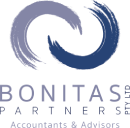Cash flow is the lifeblood of any business. You need cash coming in regularly so you can continue to operate your business and pay your suppliers, employees and tax obligations on time.
However, managing cash flow can be challenging particularly if your small business experiences late paying clients and incurs unforeseen costs. Situations like these can lead to major disruption.
It is normal to expect a temporary period of negative cash flow as you scale up your business. Afterall, you have to invest cash before you reap the rewards.
So how can you maintain a healthy cash flow as a small business owner? We have outlined 6 easy tips to help you keep your cash flowing.
Tip 1. Get Your Invoices Right
Your clients won’t pay you on time if you send out incorrect invoices. Ensure all information on your invoices is correct and that the invoice includes a breakdown of the products and or services you are invoicing. Make sure all payment details are correct so it is as easy as possible for your clients to pay you. This will:-
- Overcome any backward and forward communication to answer questions and fix errors; and
- Result in you in seeing money in your bank account sooner rather than later.
It is also important to outline payment details upfront when you engage a new client. Many business owners often forget this amid all the excitement and then spend time sorting it out later. During the onboarding process, make sure you understand who you should send invoices to and who to contact if any issues arise. Agree on payment terms so your clients understand when they have to pay in relation to receiving an invoice.
Tip 2. Send Your Invoices On Time
If you are late sending invoices to your clients, you can expect late payment. It is surprising how many business owners are not on top of their invoicing. Delayed invoicing often leads to a multitude of cash flow problems later on.
Timely invoicing is a simple yet effective way to ensure your cash flow stays healthy. If you find it difficult to keep on top of invoicing, set aside time each week to do it or consider investing in invoicing software.
As well as sending your invoices on time, you should monitor your debtors and follow up any clients with near or overdue accounts. This enables you to send polite reminders to jog their memory ahead of time and chase up any late payments.
Tip 3. Review Your Payment Model
You take a big lead of faith if your clients pay 100% of your fees on completion. This approach assumes they will pay your invoice in full by the due date. It is wise to request a deposit or upfront payment to ensure that you don’t end up out of pocket. Including an early bird discount is one way to encourage clients to pay in advance.
We see more small business owners offering monthly direct debit payment plans to their clients. This arrangement provides certainty around timing and cashflow movements for you and your clients.
You may consider implementing late fees to encourage your clients to pay you in a timely manner. They are less likely to forget or try to delay payment if doing so will incur a charge.
Tip 4. Create a Payment Calendar
Cash flow isn’t just about money coming in the door. You also need to be aware of when and how much cash will flow out the door. Create a payment calendar to keep track of supplier invoices, payroll liabilities and taxes so you know when your cash balance will reduce. A payment calendar will:-
- Help you plan for any expenses and assist with cash flow; and
- Enable you to make payments on time which is crucial for maintaining a good relationship with your suppliers, employees and business lenders.
Tip 5. Create Cash Flow Forecasts
Expanding your business often requires you to invest more than you currently earn. This can lead to negative cashflow in the short term.
When planning for growth, it is important to develop various cashflow scenarios. This will help you expand your business in a safe and affordable way, whilst maintaining your current standard of work. There is no point expanding if you have to starve your business of cash to do so.
Creating cash flow forecasts can be complicated, but there are forecasting tools to help with this. The services of a professional accountant can also be extremely useful in creating these projections and adjusting your growth trajectory accordingly.
Tip 6. Prepare a Safety Net
Ensure your business has a cash safety net to manage any unforeseen costs or circumstances. Life is unpredictable and no matter how carefully you plan ahead, there will always be unprecedented expenses.
An emergency cash reserve gives you some breathing space and means that you can maintain a healthy cash flow even when you have to outlay cash for unexpected costs that you failed to account for.
Keep Your Money Moving
Stagnant cash flow will not only see you lose money, but it will also result in you missing out on growth and investment opportunities.
If cash flow is negative for too long, your business won’t remain viable enough to operate. It is important you employ the above common-sense strategies to maintain a healthy cash flow and ensure the survival and success of your small business.


